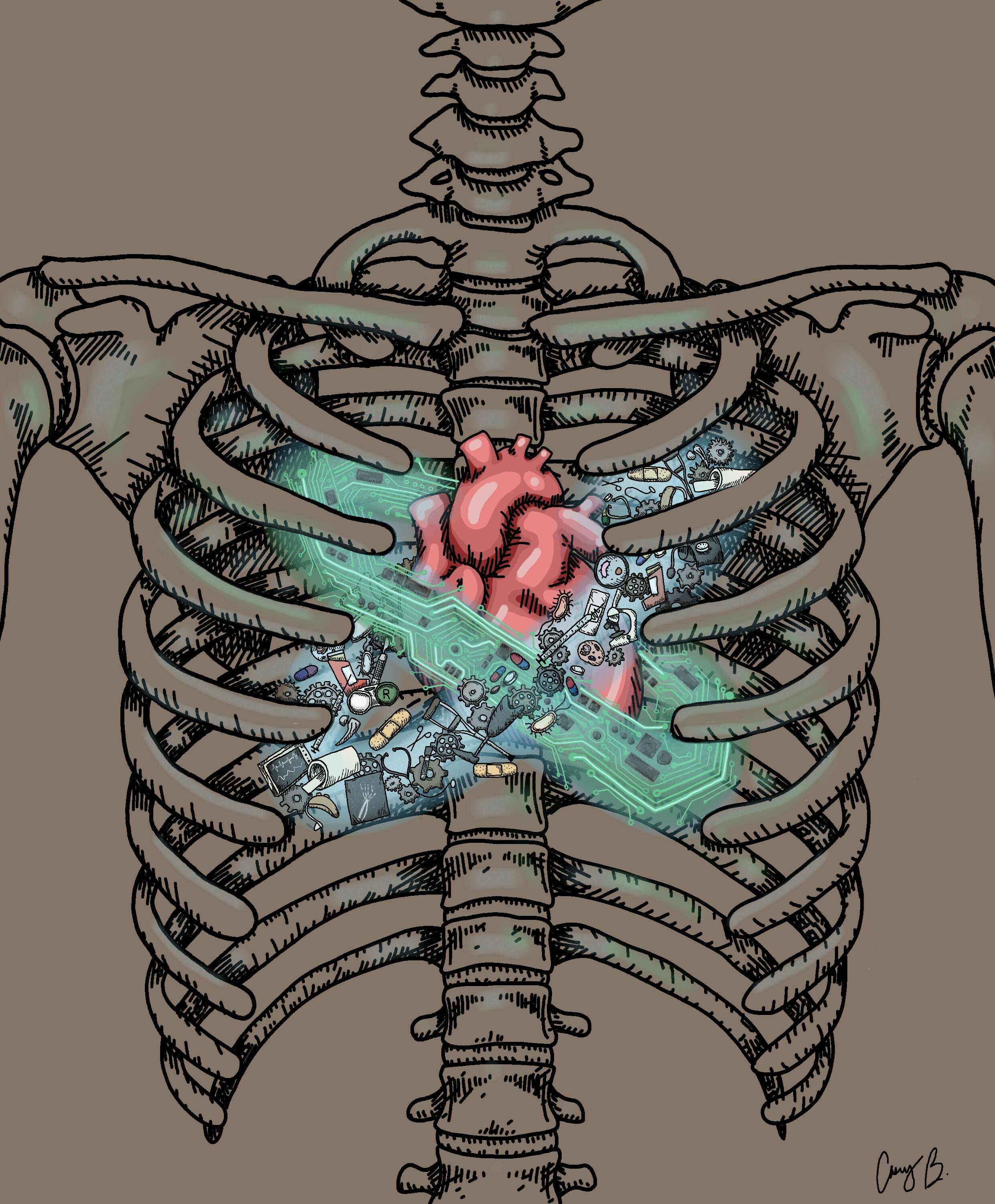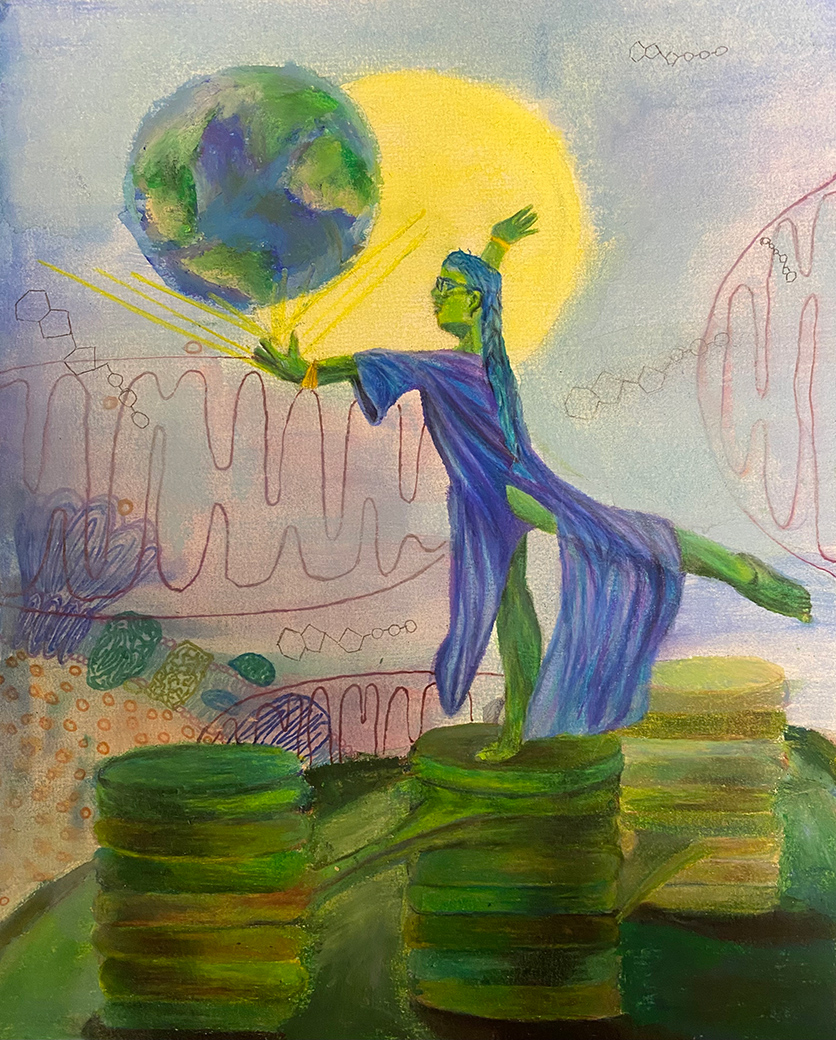The beauty of engineering is there are no right or wrong solutions. You get to use creativity to come up with an effective solution.
In September, the Department of Biomedical Engineering at Texas A&M University hosted its fourth annual Artistic Engineering Contest, inviting students, faculty, and staff to express the beauty they find in engineering.
The digital art submission “It Comes From Within” by senior Casey Batten was selected as the first-place piece. Batten considers every step of the engineering design process as a form of art, demanding creativity and out-of-the-box thinking.
“I was drawn to engineering because it had both technical and creative aspects,” Batten said. “The beauty of engineering is there are no right or wrong solutions. You get to use creativity to come up with an effective solution.”
The four winning submissions were selected by faculty and staff and will be displayed near the departmental front office. Descriptions for the top four art pieces are listed below.
First place: “It Comes From Within” by Casey Batten

This digital piece depicts the inner drive within every engineer to create and innovate. It features a minimally colored skeleton with a vibrant core, consisting of a heart surrounded by medical devices and PCB circuitry. This contrast emphasizes the importance of that internal core, creating a visual representation of what makes biomedical engineers tick when compared to the empty outer shell of a skeleton.
Second place: “Symphony of Life” by Ankit Kumar

The human heart and vascular system work in tandem to support life. This artwork shows electronically arranged microscopy images of an endothelialized microfluidic vessel-on-a-chip device. The cells in this device were exposed to an arterial flow pattern with the pumping system, HemaDyne. The cells were immunostained for adherens junctions and nuclei for quantification purposes. This platform technology enables researchers to mimic complex hemodynamic waveforms in a lab environment, capturing the “Symphony of Life.” With this tool, researchers can explore new frontiers in cardiovascular research, emphasizing vascular function in health and disease.
Third place: “The Intricate Beauty of Endothelial Cell Architecture” by Sreelakshmy Suresh

This image captures Human Umbilical Vein Endothelial Cells (HUVECs) stained with V-Cadherin (green) and DAPI (blue). The glowing blue nuclei contrast with green cell junctions, revealing the intricate cellular architecture that supports vascular health, offering a glimpse into the beauty of endothelial organization.
“And if you gaze for long into an abyss, the abyss gazes also into you — this time with a million brilliant blue pupils. The secrets of biology lie behind and beneath the enigmatic prisms of cells, each being as important as the clusters they form in synergy,” Suresh said.
Fourth place: “Global Energy” by Sarah Buchanan
